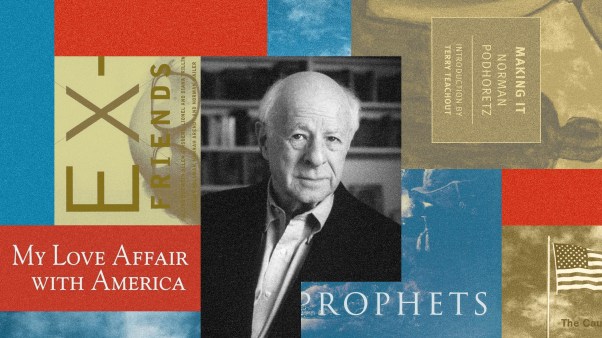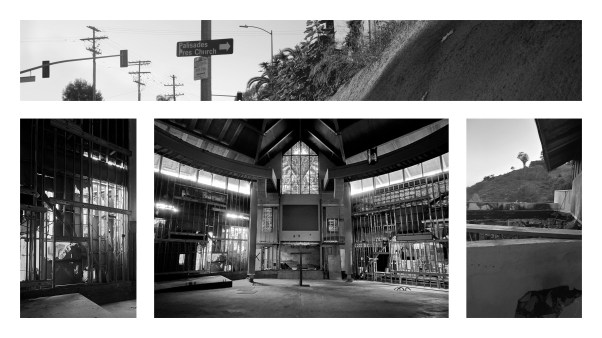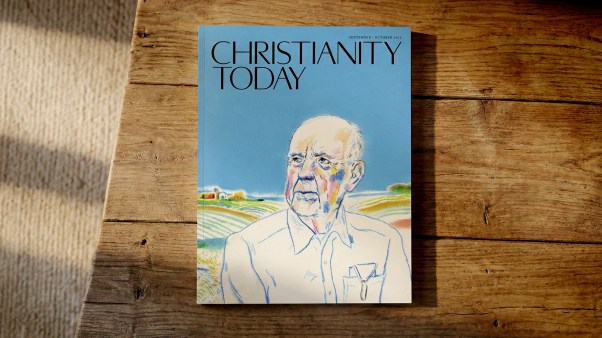Protestant-Catholic dialogue, long popular on the Continent, is now gaining currency here. There are values in this dialogue, but they will be jeopardized if a sentimental approach obscures both its purposes and its possibilities. The contemporary American dialogue is due for ignominious collapse unless it is reoriented.
THE AMERICAN VERSION
The American version of the dialogue got off on the wrong foot. It was meshed into the outmoded liberalism of a generation ago. This has already produced superficiality which, in turn, will assure failure. The dialogue commenced in the sentimental vein that all participants are fellow Christians and that, therefore, the positions they hold are ultimately bound to be one. Such sentiments carry an aura of truth but are really deceptive and, in the long run, damaging to genuine confrontation.
The assumption of ultimate oneness is merely an extension of a vapid liberalism which insisted that “we are all heading for the same place, however our various routes may differ.” To such minds, theological differences were inconsequential. These men were too lazy to assess the differences and too flabby to care about the consequences. Differences between creeds, such liberals felt, are due to prejudice. If prejudice could be overcome, the differences would automatically disappear.
FLATTERY AND FOOD
How could prejudice be overcome? Why, by getting together. Let men of different creeds gather around a table—preferably piled high with good food. Let them get to know the other fellow, call him by his first name, come to realize he does not have horns. In such an atmosphere men would soon understand that their labels did not matter, that beneath it all they were one. The warm glow of brotherhood would melt the hardest prejudice.
This was an era which derogated thinking and elevated sentimentality. Its typical product was the National Conference of Christians and Jews, dedicated to the proposition that brotherhood can be built by ignoring differences. The dialogue in many ways reflects the spirit of this movement. There is gentle ribbing about creedal differences, always correctly done with one’s own group as the object of the sally. There is the mutual flattery and, in the case of the Protestants, the fawning accommodation. Out of it all there emerges a disposition to confuse sentimental meetings with genuine dialogue. The trouble with such “dialogue” is that it lacks reality. It does not actually “come clean.”
RIGGED DIALOGUE
Here is one instance of phony dialogue, which evades issues rather than meets them. The question of state aid to church institutions is a favorite topic. The typical panel will feature Protestants and Roman Catholics, or sometimes a Protestant, a Catholic, and a Jew. Now the Supreme Court has already spoken for millions of Americans when it interpreted the First Amendment as forbidding the use of tax funds for church schools. This view is held by many churchmen; no doubt it is the majority view here in the United States. Yet, in instance after instance, the “dialogue” is rigged so that this majority point of view is not represented at all. The Protestant on the panel will likely be someone like Dr. F. Ernest Johnson who favors state subsidies to church schools, and the Jew will likely be Will Herberg who outdoes Roman Catholics in his zeal for public subsidies to separate church schools. A Protestant who represents the majority Protestant viewpoint and a Jew who represents the majority Jewish viewpoint are barred from the dialogue lest their presentations “offend the Catholics.”
This means that the real issue—shall the state pay subsidies to church schools?—is not courageously faced. The “dialogue” moves solely within the orbit of how much these schools will be paid and how legal prohibitions against such payments can be overcome.
Something more fundamental is wrong with “dialogue” of this kind. Its sentimental “brotherhood” motif rests on a false theological assumption. The false assumption is indicated in one of Robert McAfee Brown’s “Rules for the Dialogue” (Christian Century, Feb. 17, 1960). Dr. Brown writes: “We would agree that (the dialogue) should lead ultimately to the unity of all Christians, to the fulfilling of the prayer of Christ ‘that they may be one.’ ” He then goes on to state that while unity does not seem realizable at the moment, yet “with God all things are possible.” He adds: “All we can really do is to say in penitence and yet in hope that we disagree and that it is wrong to disagree.”
Does this imply a need for breast-beating over the fact that the Church of Jesus Christ is not the monolith which the Roman hierarchy insists she must be? Can any Protestant who takes his faith seriously believe that Christ’s prayer envisaged the creation of one all-embracing ecclesiastical monolith? What Dr. Brown apparently contemplates as a mutually acceptable goal for the Church would be regarded by many as a goal to be avoided at all costs. The great division which he deplores as evil they would see as meaningful and valuable. What we have here is not a rule for dialogue but a method of giving away the case of the free churches before the dialogue can commence. This “rule” rigs the dialogue in such a way that realistic confrontation between the monolith concept and the concept of the free churches becomes impossible.
THE ‘COMMON BOND’
The “common bond” assumption in the dialogue is exaggerated and misleading. What Protestantism and Romanism have in common is less definitive, less significant than that which divides them. This realization points to a conclusion for the dialogue: we should confront each other not as representatives of the same faith but as representatives of quite different faiths. Protestants should confront Roman Catholics in the dialogue much as they would confront Jews.
If this point needs amplification, let us note that Protestants and Roman Catholics have been steadily moving apart for centuries. Despite the “conversation” and the “dialogue,” they are in the decisive matters farther apart today than they have ever been. There is no foreseeable change in this development. The explanation for the growing division is clear: Protestantism has an anchorage in the Scripture which Rome has, in part at least, eschewed. Rome has, in effect, substituted its own infallible head, the Pope, for the Scriptures as the basis of authority. Rome’s theological development demonstrates what can happen when the scriptural moorings are severed. The dogma of Papal Infallibility (1870) is frequently cited as the step that made the Protestant-Roman division irrevocable. But perhaps even more decisively divisive has been the development of the cult of the Virgin Mary in the Roman church. As expressed in the dogmas of the Immaculate Conception (1854), the dogma of the Assumption of the Virgin Mary (1950) and in a plethora of popular religious practices in Roman Catholic parishes, this movement has largely severed Rome from the Apostolic Christian tradition.
THE UNBRIDGABLE CHASM
The dogmas just cited, proclaimed by an infallible Pope, are required beliefs for all Catholics. These beliefs represent no more than bits of pious gossip and are quite without warrant in the New Testament. Apparently they were unknown to the apostolic Church. Yet because the Roman church is uninhibited by Scripture in its theological development, such items can become unchangeable dogma. The possible end of the Marian gambit is even more outrageous to Protestants. This is a dogma which may yet promote Mary to the role of Co-redemptrix with Jesus Christ of the human race. In view of such passages as Acts 4:12, Rome’s repudiation of its tie with traditional Christianity will be virtually complete. Roman Christianity will have become a “Mary faith” rather than a Christian faith.
It thus appears that dialogue commencing with an assumption of ultimate unity of faith is falsely based. Its danger is that in a desire for good fellowship and in an ambition to appear big and brotherly, the cutting edge of conviction will be dulled. The danger is accommodation which atrophies faith. Such unsound dialogue may actually lead to the abandonment of the Christian witness. Reinhold Niebuhr recently declared that Christians ought to abandon their effort to convert Jews. Here the fruit of long and pleasant dialogue with Hebrew leaders in New York City is the rejection of one of the clearest imperatives of the Gospel.
AUTHENTIC DIALOGUE
Dialogue must be put on a realistic basis. It must be based not on an assumption of nonexistent oneness but on an assumption of irrevocable difference. It begins with the frank acknowledgment that we are not at one with Rome in purpose and direction and never can be so long as we are true to the Gospel we have received. Protestantism and Romanism are permanently incompatible. What we seek in the dialogue is not unity or agreement. What we seek is 1. a clear identification of our positions in relation to each other, and 2. a way of living together in a common culture.
The first points to a new form of the dialogue. A major criticism of the dialogue as we have observed it is its shapelessness. It is not only sentimental, it is inchoate. It sets forth in all directions and arrives there. The dialogue needs to be set in the classic form of debate. Recall that Luther’s Ninety-five Theses were propositions for debate, a familiar and useful academic procedure in his day. The debate was not held at the time of posting, but it was held a few years later when Luther contended with Eck. None can doubt the enormous theological and even cultural significance of this classic encounter. How its careful form and exacting discipline contrast with the dialogue that we know! The Luther-Eck debate was not shapeless. It was not characterized by the fuzzy sentimentality which avoids issues in the name of “brotherhood.” It was, rather, the well-calculated clash of fact and authority on clearly drawn issues. This is the kind of dialogue that will serve us well today.
The second goal of the dialogue is to adjust our incompatibility so that it will not erupt destructively but operate in a manner mutually stimulating. We seek in the arena of free discussion a creative outlet for the drives once expressed in the wars of religion. We seek to understand each other. We seek a modus vivendi amid unreconcilable differences. Every belief, every ambition we cherish as Protestants must always be subject to the tempering realization that we are called to live side by side with Roman Catholics in peace.
Samuel M. Shoemaker is the author of a number of popular books and the gifted Rector of Calvary Episcopal Church in Pittsburgh. He is known for his effective leadership of laymen and his deeply spiritual approach to all vital issues.










